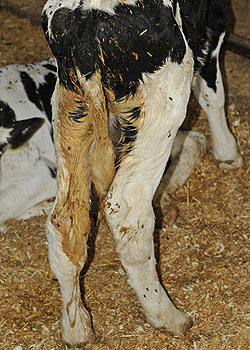Healthy Calf Conference
Follow to stay up-to-date on all Healthy Calf Conference updates. Speaker announcements, sponsorship information, registration announcements, and more.

Why do calves respond differently to disease? There are several management factors that affect whether a calf gets sick, and how they fight this challenge, including calving difficulty, colostrum management, housing and hygiene. Calves are also particularly susceptible to disease when they have been transported or exposed to calves from other farms.
Nutrition is also critical to fighting disease by providing calves with the resources they need. Never withhold milk from scouring calves, as they require energy and protein to:
It is well documented that stress, including nutrient deficiency, impairs immune responses (Griebel et al. 1987). Conventional feeding of only 10% of body weight (BW) may not meet the calf’s requirements, particularly when the requirements change, such as with cold stress, heat stress, or disease.
Intensified feeding programs have been shown to increase some immune responses, and decrease others (Nonnecke et al. 2003; Foote et al. 2005), but with unknown effects on actual calf health. However, recent research out of Cornell University has shown that increased feeding level of milk can help calves fight the effects of the parasite Cryptosporidium parvum (Ollivett et al. 2009).
Calves were experimentally challenged with C. Parvum (resulting in 100% incidence of diarrhea) and fed either conventional nutrition (CN) or a high plane of nutrition (HPN), and followed for 21 days.
Calves of both groups had similar starting body weights, total protein (measure of antibodies) and dehydration status before they were infected. While nutritional treatment did not affect the peak, total amount, `onset or duration of shedding of C. Parvum, those fed the HPN diet improved faster. CN calves showed dehydration (HPN did not) and experienced weight loss, whereas HPN calves grew and recovered from diarrhea faster.
| Treatment | Average Daily Gain (g/d) | Feed Efficiency (g/kg) |
| Conventional Nutrition | -48 | -38.4 |
| High Plane of Nutrition | 433 | 131.9 |
It is important to ensure you are feeding beyond maintenance requirements not only to allow for growth, but to ensure calves are able to fight disease. Make sure sick calves are getting the milk they need. However, an ounce of prevention is worth a pound of cure; proper colostrum delivery, housing and hygiene continue to go a long way in creating healthy calves.
Follow to stay up-to-date on all Healthy Calf Conference updates. Speaker announcements, sponsorship information, registration announcements, and more.
The Codes of Practice are nationally developed guidelines for the care and handling of farm animals. They serve as our national understanding of animal care requirements and recommended practices.